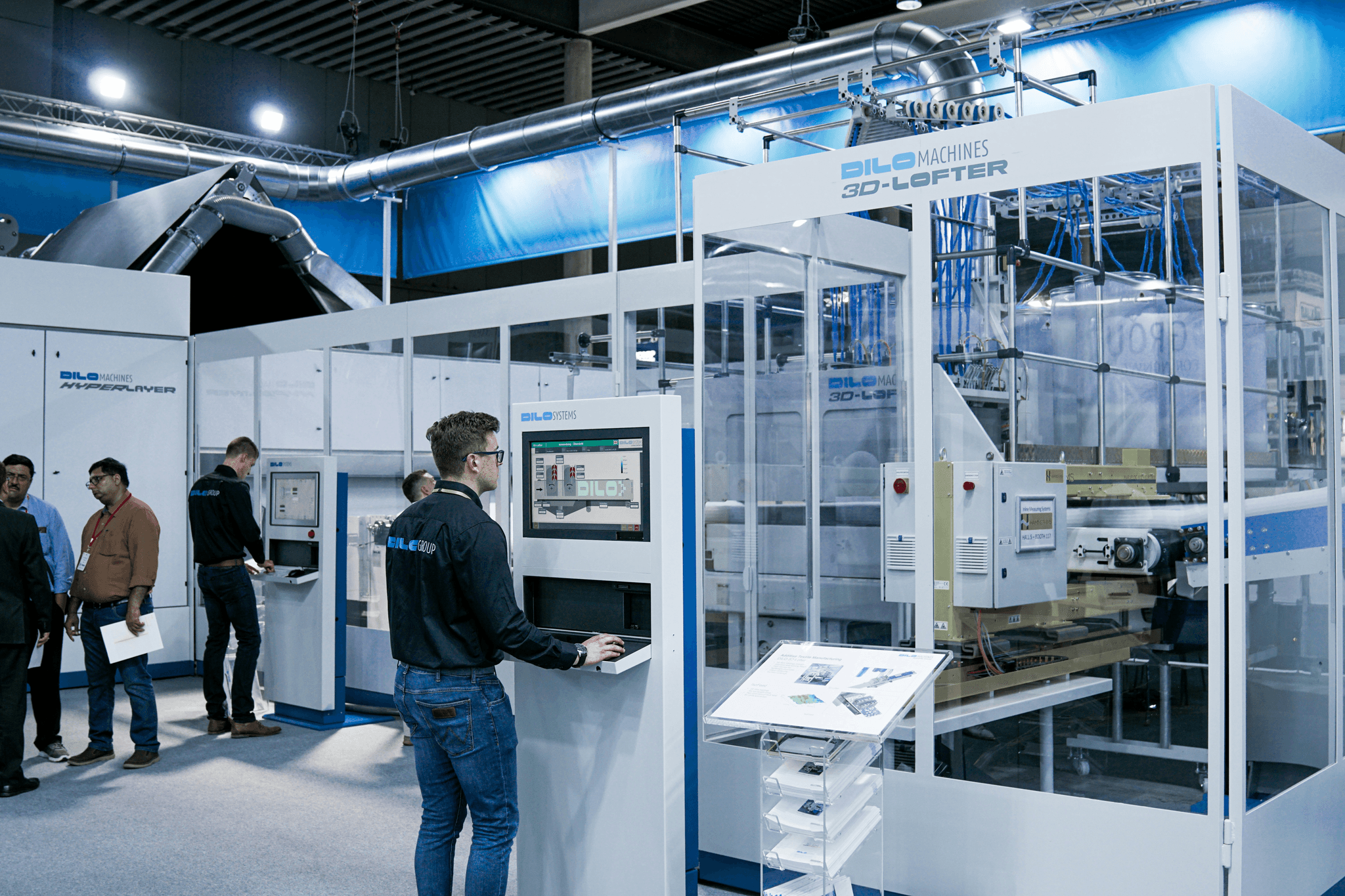Introduction
In the fast-paced world of manufacturing, the significance of inspection cannot be overstated. Quality control in manufacturing is the backbone that ensures products meet stringent standards and customer expectations. This process not only safeguards a company's reputation but also enhances overall efficiency and productivity.
The Importance of Inspection in Manufacturing
Inspection plays a pivotal role in maintaining quality production standards within the manufacturing sector. By implementing rigorous quality inspection protocols, businesses can identify defects early in the production process, reducing waste and minimizing costly recalls. Ultimately, effective inspections bolster consumer trust and loyalty, which are essential for long-term success.
Understanding Quality Control Processes
Quality control encompasses a series of processes designed to monitor and maintain product quality throughout the manufacturing cycle. These processes include regular testing, statistical analysis, and continuous improvement strategies that ensure compliance with industry standards. A robust understanding of these quality control mechanisms allows organizations to implement best practices that enhance their overall output.
The Role of Quality Assurance Specialists
Quality assurance specialists are the unsung heroes behind successful quality control initiatives in manufacturing environments. Their expertise lies in developing inspection protocols, conducting audits, and training staff on best practices for maintaining high-quality standards. By bridging gaps between production teams and management, these specialists play a crucial role in fostering a culture of excellence within organizations.
What is Quality Control in Manufacturing

Quality control in manufacturing is a systematic process aimed at ensuring that products meet specified requirements and standards. It encompasses various activities, including inspection, testing, and evaluation of processes and outputs to maintain quality production. The ultimate goal of quality control is to minimize defects, enhance customer satisfaction, and ensure compliance with industry regulations.
Definition and Objectives
Quality control refers to the set of procedures used to monitor and maintain the quality of products during the manufacturing process. Its primary objectives include identifying defects early in production, reducing variability in product quality, and ensuring that the final output aligns with customer expectations. By implementing effective quality control measures, manufacturers can achieve consistency in their products while enhancing their reputation for reliability.
Key Components of Quality Control
The key components of quality control include inspection techniques, statistical process control (SPC), and continuous improvement practices. Inspection involves examining products at various stages of production to identify any deviations from established standards. Additionally, employing SPC allows organizations to analyze data trends over time, making it easier for quality assurance specialists to spot potential issues before they escalate.
Benefits of Effective Quality Control
Implementing effective quality control in manufacturing yields numerous benefits that extend beyond just meeting standards; it also fosters a culture of excellence within an organization. Improved product consistency leads to higher customer satisfaction rates as clients receive reliable goods that meet their expectations every time. Moreover, robust quality inspection processes can significantly reduce costs associated with rework or recalls due to defective products.
The Inspection Process Explained

In the realm of manufacturing, inspection plays a pivotal role in ensuring that products meet the established quality standards. Quality control in manufacturing is not just about checking items off a list; it's a comprehensive process designed to catch defects before they reach consumers. By understanding the inspection process, businesses can enhance their quality production efforts and maintain customer satisfaction.
Steps in Quality Inspection
The quality inspection process typically begins with defining the criteria for acceptable quality levels based on industry standards or customer specifications. Next, a sample of products is selected for inspection—this could be random or systematic sampling depending on the production volume and complexity. Once samples are inspected, data is collected and analyzed to determine if the batch meets quality control requirements; if not, corrective measures are implemented promptly.
Following this initial assessment, detailed reports are generated by quality assurance specialists to document findings and suggest improvements. This feedback loop is crucial as it informs future production processes and helps prevent recurring issues. Ultimately, these steps create a robust framework for continuous improvement in quality control across manufacturing operations.
Tools and Techniques Used
Quality control relies heavily on various tools and techniques designed to facilitate thorough inspections. Commonly used equipment includes calipers for measuring dimensions accurately, gauges for assessing tolerances, and visual inspection tools like magnifying glasses or digital cameras for detecting surface defects. Additionally, specialized software solutions help manage data collected during inspections, making it easier to track trends over time.
Techniques such as Statistical Process Control (SPC) allow manufacturers to monitor processes in real-time, ensuring they stay within defined limits. Other methods include Six Sigma principles that focus on reducing variability and improving overall product quality through disciplined data analysis. These tools combined with effective training empower QA specialists to perform meticulous inspections that uphold high standards of quality control in manufacturing.
Real-World Examples of Successful Inspections
One notable example of successful inspections can be found in the automotive industry where rigorous QA inspections have led to significant declines in defect rates over time. A prominent car manufacturer implemented a multi-tiered inspection system that included both automated checks during assembly and manual inspections at various stages of production—a strategy that proved effective in maintaining high-quality standards while minimizing recalls.
Another success story comes from electronics manufacturing where detailed QA inspections ensured compliance with international safety standards before products reached consumers’ hands. By employing third-party inspectors who specialize in electrical safety testing, companies were able to enhance their credibility while providing peace of mind to customers regarding product safety.
These examples highlight how strategic implementation of inspection processes can lead not only to improved product reliability but also bolster brand reputation through consistent adherence to stringent quality control measures.
Quality Control Systems and Standards

Quality control in manufacturing is not just a buzzword; it's a vital framework that ensures products meet specific standards while minimizing defects. To achieve this, organizations often turn to established systems and standards, particularly the International Organization for Standardization (ISO). These frameworks provide guidelines that help companies streamline their quality assurance processes, ensuring that inspection and quality control are both effective and efficient.
Overview of ISO Standards
ISO standards serve as the backbone of quality control in manufacturing, providing a set of internationally recognized criteria for various industries. These standards focus on ensuring consistent quality production through systematic processes and rigorous inspections. By adhering to ISO guidelines, organizations can enhance their credibility in the marketplace while fostering trust among customers regarding their commitment to quality.
ISO 9001 is perhaps the most well-known standard, emphasizing a process-oriented approach to quality management systems (QMS). This standard outlines requirements for documentation, internal audits, and continual improvement—all critical elements of effective quality control. Businesses that implement these standards often see improved operational efficiency and increased customer satisfaction due to enhanced product reliability.
Implementing Quality Management Systems
Implementing a Quality Management System (QMS) involves integrating various components that contribute to overall inspection and quality control in manufacturing. A robust QMS includes policies, procedures, and responsibilities designed to achieve consistent product quality while promoting continuous improvement through regular QA inspections. This systematic approach helps organizations identify areas for enhancement in their production processes.
To successfully implement a QMS, companies must engage all levels of staff—from executives to floor workers—ensuring everyone understands their role in maintaining high-quality standards. Training sessions focused on best practices can empower employees to take ownership of their contributions toward achieving exceptional inspection outcomes. As teams become more aligned with the principles of quality assurance, they are better equipped to prevent defects before they reach consumers.
Moreover, adopting technology solutions can further streamline these systems by automating data collection during inspections or providing real-time analytics on production metrics. With an effective QMS in place, manufacturers can ensure compliance with industry regulations while enhancing overall productivity through proactive measures aimed at minimizing errors.
Case Studies on Quality Control Applications
Real-world applications of quality control demonstrate its importance across various sectors within manufacturing industries. For instance, consider an automotive manufacturer that implemented ISO 9001 standards across its production facilities; after introducing rigorous QA inspections at each stage of assembly, they reported a significant reduction in defects—leading not only to cost savings but also higher customer satisfaction ratings.
Another example comes from the electronics sector where a company adopted lean manufacturing principles alongside robust inspection protocols for its circuit boards. By emphasizing continuous improvement through regular training sessions focused on quality control techniques among employees—and integrating feedback loops into their process—they achieved notable reductions in waste and rework costs associated with faulty products.
These case studies underscore how effective implementation of inspection protocols and adherence to established standards like ISO can lead directly to enhanced product reliability and overall business success. As manufacturers continue embracing innovative approaches within their operations—fueled by insights gained from past experiences—they pave the way for future advancements in inspection techniques and QA strategies.
The Role of Technology in Quality Control
In today's fast-paced manufacturing landscape, technology plays a pivotal role in enhancing inspection and quality control processes. As manufacturers strive for higher efficiency and reduced errors, the integration of advanced technologies into quality control systems has become essential. This section explores how automation, software solutions, and innovative practices are transforming quality assurance in manufacturing.
Automation and Quality Inspection
Automation has revolutionized the way quality inspection is conducted in manufacturing environments. By utilizing automated systems, companies can perform inspections with greater speed and accuracy than ever before, significantly reducing human error associated with manual checks. This shift not only streamlines the quality control process but also allows quality assurance specialists to focus on more complex tasks that require critical thinking rather than repetitive inspections.
Moreover, automated inspection tools often come equipped with advanced sensors and imaging technologies that can detect defects at a microscopic level. These capabilities enhance the overall effectiveness of quality control in manufacturing by ensuring that products meet stringent standards before they reach consumers. As a result, manufacturers can achieve higher levels of quality production while minimizing waste and costs associated with rework or product recalls.
Software Solutions for Quality Management
The rise of sophisticated software solutions has further empowered manufacturers to enhance their quality control processes. Quality management software (QMS) provides a centralized platform where all aspects of inspection and quality control can be monitored and analyzed in real-time. This integration facilitates better communication among teams and ensures that all stakeholders are aligned on quality objectives throughout the production cycle.
Additionally, these software tools often include features such as data analytics, reporting capabilities, and compliance tracking that streamline the QA inspection process. By leveraging these insights, organizations can identify trends over time, allowing them to make informed decisions that drive continuous improvement in their manufacturing practices. Consequently, effective use of software solutions not only boosts productivity but also elevates overall standards within the realm of quality control.
Innovations in Manufacturing Quality
Innovation is at the heart of advancements in inspection and quality control within manufacturing industries today. Emerging technologies such as artificial intelligence (AI), machine learning (ML), and Internet of Things (IoT) devices are reshaping traditional approaches to QA inspection by providing deeper insights into production processes. For instance, AI algorithms can predict potential defects based on historical data patterns—enabling proactive measures before issues arise.
Moreover, IoT devices facilitate real-time monitoring during production runs by collecting vast amounts of data from various stages of manufacturing operations. This information is invaluable for maintaining high-quality standards as it allows for immediate adjustments when deviations occur—ensuring consistent adherence to established benchmarks for quality production. Ultimately, embracing these innovations equips manufacturers with tools necessary to thrive amidst increasing competition while upholding rigorous standards for inspection and quality control in manufacturing.
Third-Party Inspection Services

When it comes to maintaining high standards in manufacturing, third-party inspection services play a pivotal role. These services provide an objective assessment of quality control processes, ensuring that products meet stringent requirements before they reach the consumer. By engaging a reliable partner like China Inspection Pro, companies can enhance their quality assurance strategies and bolster their reputation in the marketplace.
Benefits of Using China Inspection Pro
China Inspection Pro offers a wealth of advantages that streamline quality control in manufacturing. One major benefit is their expertise in navigating complex regulations and standards, which ensures compliance and minimizes risks associated with international trade. Additionally, their rigorous quality inspection processes help identify defects early on, reducing waste and rework costs while enhancing overall production efficiency.
Moreover, partnering with China Inspection Pro allows manufacturers to gain insights from seasoned quality assurance specialists who understand the nuances of various industries. This collaboration fosters continuous improvement in production practices and encourages adherence to best practices in quality management systems. Ultimately, leveraging such third-party inspection services not only helps maintain product integrity but also strengthens customer trust.
How Third-Party Inspections Enhance Quality Control
Third-party inspections are integral to effective quality control because they provide an unbiased evaluation of manufacturing processes and outputs. By employing external experts for QA inspection, companies can uncover hidden issues that internal teams might overlook due to familiarity or bias. This fresh perspective is crucial for maintaining high standards in quality production.
Furthermore, these inspections often include comprehensive reports detailing findings and recommendations for improvement, allowing manufacturers to implement corrective actions swiftly. Such proactive measures not only improve product quality but also foster a culture of accountability within organizations focused on continuous enhancement of their operations. Consequently, third-party inspections serve as a catalyst for elevating overall performance in quality control.
Case Studies of Successful Partnerships
Numerous companies have experienced transformative results by partnering with third-party inspection services like China Inspection Pro for their quality control needs. For example, a leading electronics manufacturer faced significant challenges with defective components affecting production timelines and customer satisfaction levels; after engaging China Inspection Pro's QA inspection team, they identified critical flaws early on during the assembly process. As a result, they significantly reduced defect rates and improved delivery times.
In another instance, a textile company sought assistance from third-party inspectors to ensure compliance with international safety standards before shipping products abroad. With thorough inspections conducted at multiple stages of production by qualified specialists from China Inspection Pro, they successfully passed all regulatory checks without any delays or penalties—ultimately boosting their market presence globally.
These case studies illustrate how effective partnerships between manufacturers and third-party inspection services can lead to substantial improvements in both product quality and operational efficiency within the realm of inspection and quality control in manufacturing.
Conclusion
In the realm of manufacturing, the significance of inspection and quality control cannot be overstated. The meticulous processes established by quality assurance specialists ensure that products meet stringent standards, leading to enhanced customer satisfaction and reduced waste. As we have explored, effective quality control in manufacturing is not just a regulatory requirement; it’s a strategic advantage that fosters innovation and efficiency.
Key Takeaways on Quality Control
Quality control is essential for maintaining high standards in production and ensuring that every product meets customer expectations. The key components of quality control include regular inspections, adherence to established protocols, and continuous improvement practices. Remember, investing in robust quality inspection processes not only reduces costs associated with defects but also solidifies a brand's reputation in the market.
Enhancing Manufacturing Through Inspection
The inspection process is a cornerstone of effective quality control in manufacturing, driving improvements across various stages of production. By employing rigorous QA inspections, manufacturers can identify potential issues early on, allowing for timely interventions that enhance overall product quality. Ultimately, an emphasis on thorough inspection practices leads to superior quality production and fosters greater trust between manufacturers and consumers.
Future Trends in Quality Assurance and Inspection
Looking ahead, technology will play an increasingly vital role in shaping the future of inspection and quality control in manufacturing. Innovations such as AI-driven analytics and automated inspection systems promise to streamline processes while improving accuracy and efficiency. As industries continue to evolve, staying abreast of these trends will be essential for quality assurance specialists aiming to maintain competitive advantage through exceptional product standards.
